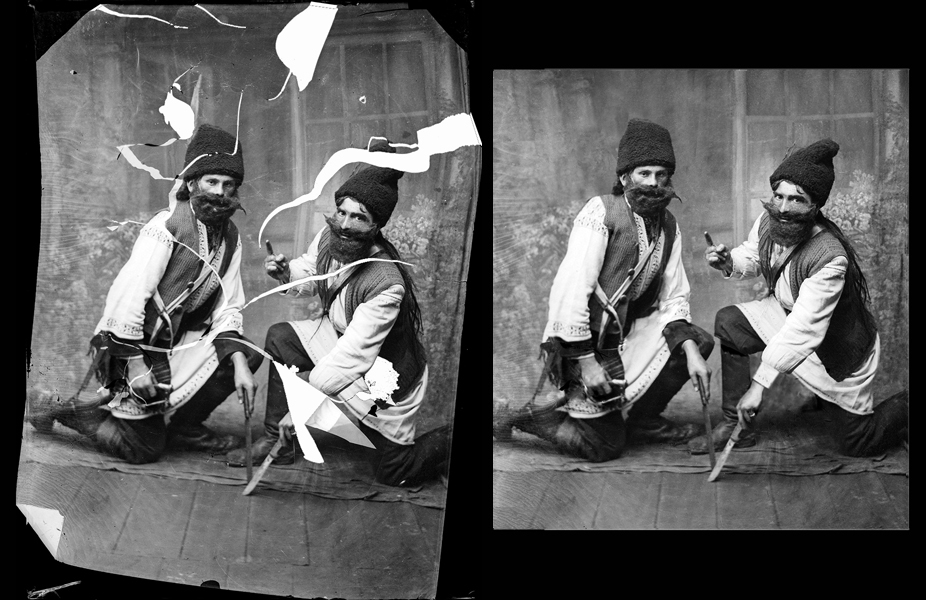 In the good old days of photography, which some of us remember as most of our lives, pictures were a whole different ball game than they are today. Each picture had to be considered and shot with some forethought because there wasn’t a whole lot we could do after we took it. And each roll of film only had so many shots, then each shot had to be developed. Of course, they usually came back with a set of negatives to get extra copies, but those were often lost along the way.
In the good old days of photography, which some of us remember as most of our lives, pictures were a whole different ball game than they are today. Each picture had to be considered and shot with some forethought because there wasn’t a whole lot we could do after we took it. And each roll of film only had so many shots, then each shot had to be developed. Of course, they usually came back with a set of negatives to get extra copies, but those were often lost along the way.
As a result, many of our favorite pictures only exist as a single rectangle of paper and in no other form. Invariably, we end up with damage to these old pictures. Whether it’s from being carried in a purse for years or from water damage, these pictures sometimes end up almost unusable.
But all is not lost. Here at McDonald Niklaus we work with a number of local and regional experts on photo restoration and enhancement who can bring those pictures back to life. Here’s how it works.
First you bring us that damaged picture and we’ll send it over to our experts.
From there, they’ll work a little magic. The first thing they’ll do is to create a copy of the image to work on. This is almost always now a digital copy. To do this they’ll scan the image into a computer. This way your original image, however damaged, won’t suffer any more degradation.
Once they have a digital image to work with, they start fixing the background and edges of the image. Often the pictures have torn or worn edges that need to be fixed. Using specialized software, the restoration artist will mark areas of the background and edges that need to be replaced and corresponding undamaged areas that can be used to make the repairs. Then the software will copy the undamaged section and blend it over the top of the damaged area making it seem to disappear. The artist will then go in and fix any rough edges or obvious blending areas.
 Once the background is restored, the more difficult work begins. They use different techniques depending on the image, but the basic idea is to take undamaged portions and use them to fix the damaged sections. For example, if one eye is damaged, they’ll take the undamaged eye, copy it, flip it, adjust the perspective and blend it over the damaged section. The same for damaged areas of hair, skin or clothes. When the damaged areas have been replaced and the seams blended together, they begin the final step of the restoration.
Once the background is restored, the more difficult work begins. They use different techniques depending on the image, but the basic idea is to take undamaged portions and use them to fix the damaged sections. For example, if one eye is damaged, they’ll take the undamaged eye, copy it, flip it, adjust the perspective and blend it over the damaged section. The same for damaged areas of hair, skin or clothes. When the damaged areas have been replaced and the seams blended together, they begin the final step of the restoration.
An old picture will pick up some natural distortions from time, light exposure and even the scanner used to create a digital image. The restoration artist will again use their specialized software to attempt to identify the noise and distortions and reverse them. The goal is to make the image look as good as it did the day it was taken without going too far and making it look artificial. Once the noise is under control, they’ll adjust the coloration of the picture to, again, make up for the ravages of time on the picture. They may also sharpen certain areas of the picture to make the faces in particular look more in focus.
When they’re done, you’ll have a digital image that hopefully looks as good as that picture looked the day it got back from the printer. Of course, in our opinion, the perfect thing to do at this stage is to get that picture printed and framed so it’s preserved for several more generations.






 "We love these silhouettes, Jody. The process was so easy and they ended up looking exactly like our boys. We now have them hanging in our bedroom. This was our first experience with a custom framing shop and the quality is just unbelievable. And being able to look at and tweak every detail was awesome. Thanks again, Jody." -Missy L
"We love these silhouettes, Jody. The process was so easy and they ended up looking exactly like our boys. We now have them hanging in our bedroom. This was our first experience with a custom framing shop and the quality is just unbelievable. And being able to look at and tweak every detail was awesome. Thanks again, Jody." -Missy L